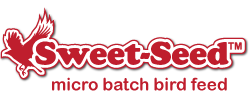Put the Rake Away – Let Birds Enjoy Leaf Litter

Raking is no one's favorite lawn and garden chore, but your backyard birds are the perfect excuse – and a legitimate one! – to put the rake down and leave yard debris alone. But do you know just how valuable those fallen leaves can be?
What Is Leaf Litter?
Leaf litter is a lot more than just leaves. All types of organic debris on the ground are part of this bounty for birds, including…
- Grass clippings
- Moss and lichens
- Small twigs and fallen branches
- Old stumps and fallen logs
- Pine needles
- Plant stems
- Toadstools and mushrooms
- Pieces of bark
- Seed pods or husks
All of this material is in varying stages of decay and decomposition depending on how long it has been on the ground, moisture levels, climate and time of year. While it may not seem like it would be valuable to birds, leaf litter is actually a tremendous resource for all of a bird's vital needs.
Leaves = Life
Everything a bird needs to survive – food, water, shelter and nesting sites – can be found in leaf litter. Different birds will use different parts of the litter, and other wildlife such as mice, gophers, insects, reptiles, squirrels, deer, raccoons and more can also benefit from leaf litter left intact. The different ways leaf litter is of value include…
Food Many foods can be found in leaf litter. Seeds, nuts, windfall fruits and berries, worms, ants, flies, spiders, snails, beetles, toads, salamanders and more are all present in rich leaf litter. This makes leaf litter a great food source for thrushes, sparrows, grouse, finches, warblers, ibises, jays, wild turkeys and many other types of hungry birds. As all this food decays, it also becomes vital nutrients for the plants birds need.
Water A thick layer of leaf litter helps conserve moisture, and where broad leaves are part of the debris, dew and rain can pool enough for birds to drink. Many birds will also rub on wet or damp leaves and debris to bathe and preen. As leaf litter conserves moisture for plants, it also helps nourish other parts of the habitat that will support even more birds.
Shelter The debris that accumulates under trees, shrubs and flowers is ideal camouflage for ground-feeding birds such as grouse, quail, sparrows, juncos, doves and more. Some birds will also use the material to nestle in on cold nights, preserving their body heat more efficiently. That same debris also insulates plant roots to protect the habitat birds and other wildlife rely on.
Nesting Sites Some birds, including turkeys, grouse, quail and pheasants, will dig scrapes directly in leaf litter and other yard debris for their nests. Many more birds – from warblers and finches to sparrows, swallows and doves – will collect bits of the material to construct their nests to shelter and nurture their eggs and hatchlings.
Leaf Litter All Year Round
Raking is popular twice a year – after the majority of autumn leaves fall and again in spring to clean up after the winter. Birds will appreciate leaf litter and yard debris year-round, however, and it plays a vital part in their survival for every season.
Spring – Birds use leaf litter for nesting, and rely on remaining food in the debris before new food sources are ripe and ready to consume.
Summer – Nesting birds rebuild their nests with more leaf litter, and yard debris helps conceal vulnerable fledglings once they leave the nest.
Fall – The bounty of food in autumn leaf litter is critical as birds bulk up for migration and winter. Other birds such as jays and chickadees cache food in the leaf litter to store for winter.
Winter – This is the season when the insulation of leaf litter is most important, as well as the remaining food stores it supplies.
With so many great resources available in leaf litter for birds year-round, let your rake gather dust and enjoy the birds instead!
Image by congerdesign from Pixabay
